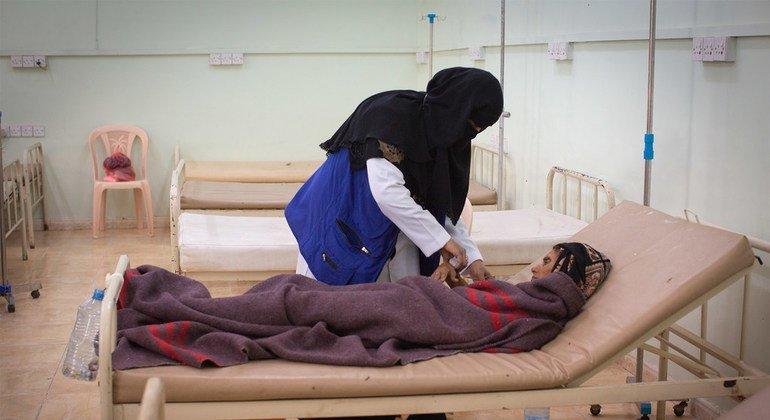November saw a sharp increase in cholera cases and deaths compared to the same period in 2023: suspected cases increased by 37 percent and deaths by 27 percent.
Yemen’s cholera crisis comes on top of nine years of conflict, widespread economic collapse and crumbling health infrastructure. The country also experienced its largest cholera outbreak in recent history between 2017 and 2020, and transmission has persisted since.
Unprecedented health crisis
“The outbreak of waterborne diseases such as cholera and acute watery diarrhea imposes a additional burden on an already stressed health system facing multiple disease outbreaks“said Arturo Pesigan, WHO representative in Yemen.
“WHO and humanitarian actors are under pressure in their efforts to address growing needs due to severe funding shortages.“
Critical challenges, including inadequate access to drinking water, poor sanitation and limited availability of treatments, are fueling the current outbreak, the WHO said.
Severe funding shortage
The cholera response in Yemen faces a funding gap of $20 million for the response period from October 2024 to March 2025.
Lack of funds has already forced the closure of 47 diarrhea treatment centers (CTD) and 234 oral rehydration centers (ORC) between March and November.
Another 17 DTCs and 39 ORCs are scheduled to close by the end of December, which could close 84 percent of DTCs and 62 percent of ORCs nationwide.
Without immediate financial support, health partners warn that Yemen may face another devastating scenario similar to the 2017-2020 outbreak, which overwhelmed its fragile health system.
According to the United Nations World Health Organization, Yemen bears the largest burden of cholera globally.
Response efforts
Since the last cholera outbreak occurred in March 2024, WHO has worked closely with Yemeni authorities, UN agencies and humanitarian partners to manage the outbreak.
Key efforts include the deployment of more than 25,000 rapid response team missions to investigate alerts and implement control measures. WHO also provided reagents and laboratory supplies to 12 central public health laboratories to confirm infections.
It also distributed essential medicines, medical supplies and water, sanitation and hygiene (WASH) materials to health centres, in addition to training more than 800 health workers in cholera case management and supporting an oral vaccination campaign against cholera that reached 3.2 million. people in six governorates.
Humanitarian challenges
The cholera crisis is just one facet of Yemen’s broader humanitarian crisis.
The conflict has left 18.2 million people, almost half the population, in need of humanitarian assistance, and 11.2 million are scheduled to receive aid.
Across the country, some 17.6 million people are affected by food insecurity, while nearly half of children under five are moderately to severely stunted.




